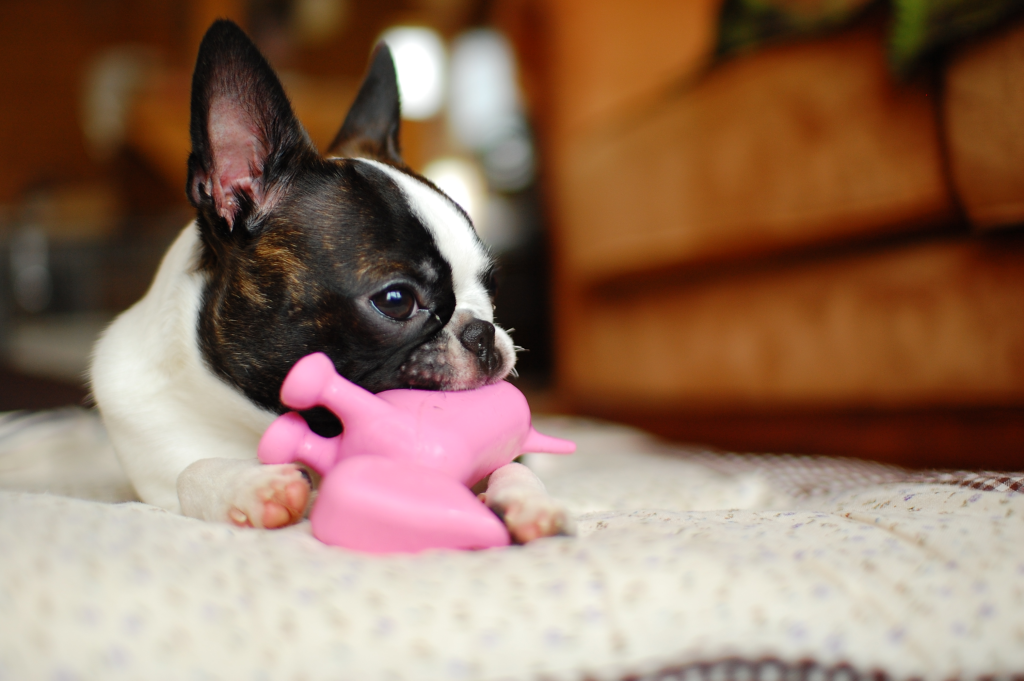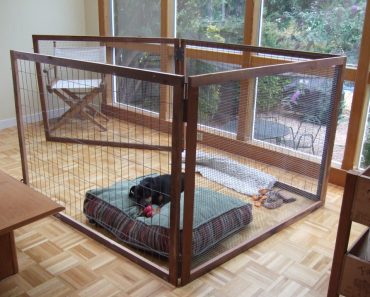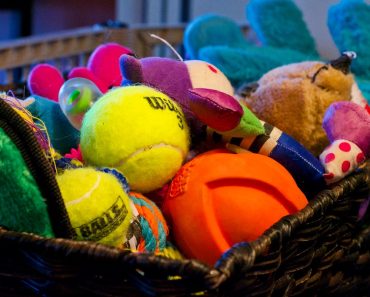Dogs may enjoy their squeaky toy for a variety of reasons, but most dog behaviour experts believe that the following three factors are responsible for why dogs like squeaky toys: hunting instincts, chewing, and the sound itself.

Hunting
A lot of squeaky toys may be tiny, fuzzy, and look like something a dog might want to chase. The squeaking noise they emit might even resemble the alarm cries of natural prey. This can help explain why hunting breeds enjoy squeaky toys more than non-hunting breeds. This might also be the reason why certain breeds, such as terriers (which were originally developed for rats), enjoy shredding their squeaky toys. Of course, any breed can play with squeaky toys, but hunting instincts may explain why a Jack Russell likes to break them while a tiny schnauzer is only interested in squeaking them.
Sounds
Another reason why dogs like squeaky toys are because of the sound they make. When your dog chews on their favourite toy and immediately hears a squeak, they experience immediate satisfaction. This might create a positive feedback loop. Dopamine may be released from the pleasure centre in your dog’s brain as a result of hearing the squeaking noise. In order to feel that dopamine high again, your dog may continue to squeak their squeaky toy.
It’s possible that your dog learned that if they squeak their favourite squeaky toy in front of you, you will play with them. If you join your dog in their game every time you hear them playing with their squeaky toy, they’ll quickly establish a link between “squeak toy” and “mom/dad plays with me.” Some people may jokingly refer to this as training their dog, but who are you to deny your dog’s request to play?
Chewing
Finally, your dog may enjoy their squeaky toy since they like to chew things. This can be especially true for younger pups that are teething. Different dogs may have distinct preferences when it comes to the texture of chew toys, similar to cats and scratchers. Puppies who are teething may prefer softer, rubber toys. Soft, stuffed squeaky toys might be preferred by older dogs with fragile teeth or small breed dogs with a propensity towards dental disease. Indestructible toys may be a good fit for power chewers. Toys made of heavier rubber, plastic, or vinyl may last longer than plush squeaky toys, but they may still have to be replaced at some point. It’s also vital to remember that dogs’ tastes alter over time.

How to Play With Squeaky Toys
Playing with your dog may seem like something that should be natural, but there are strategies and methods to encourage your dog to play with you. Most people may attempt to get their dog to interact with a toy by vehemently shaking it in front of them. Some dogs will react favourably, while others may not. A squirrel isn’t going to come running up to your dog and start dancing in front of them. Instead, move it along the floor just out of reach of your dog to stimulate his prey drive.
Safety Tips
It’s crucial to keep an eye on your dog while he plays with a new toy. It’s critical to always watch your dog when he plays with a new toy. If any part of the squeaker, stuffing or even rubber pieces is harmful if eaten by your dog, it’s essential to supervise him throughout the process. Toys should be examined on a regular basis for tears or rips that may cause them to come out or get eaten. Plush toys that have holes in them should be discarded immediately; you can also sew up the hole to prevent your dog from ingesting any filling material. It’s critical that you remove all damaged plastic and rubber items from your dog’s diet. Toys constructed of extremely hard plastic can get jagged after being gnawed on. Any toys with sharp edges that might harm your dog should be removed immediately. When playing with any toy, always keep an eye on your dog.




